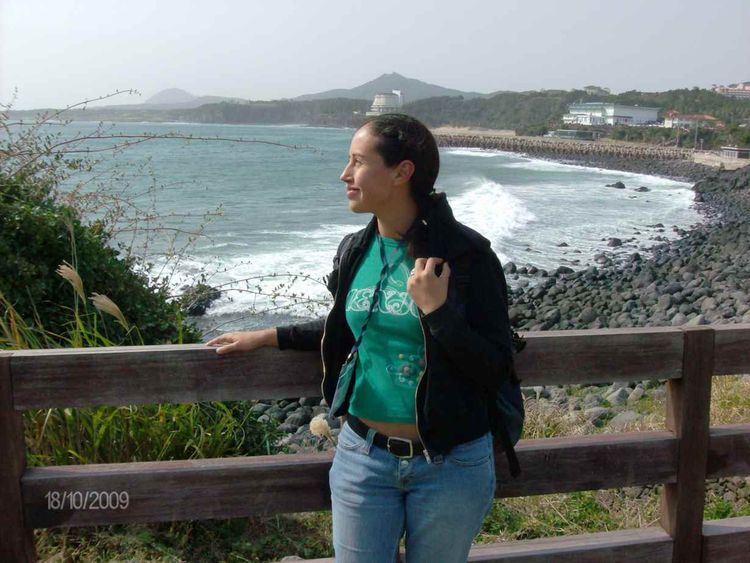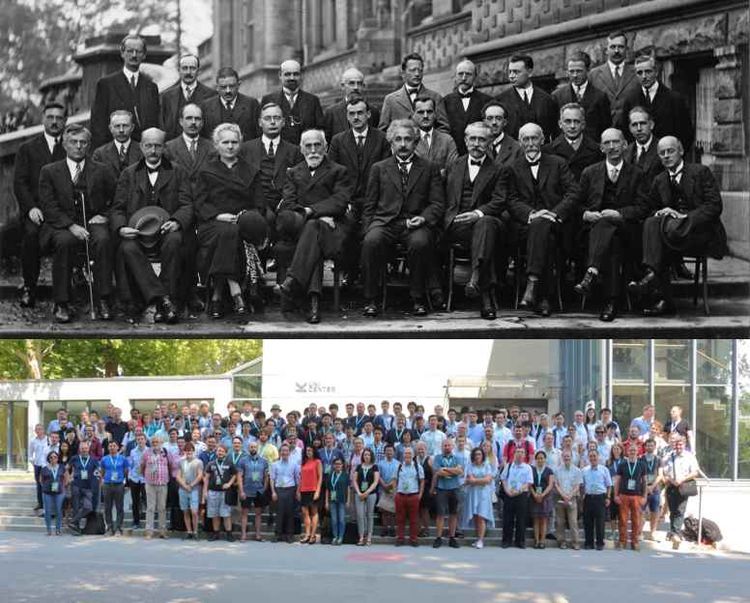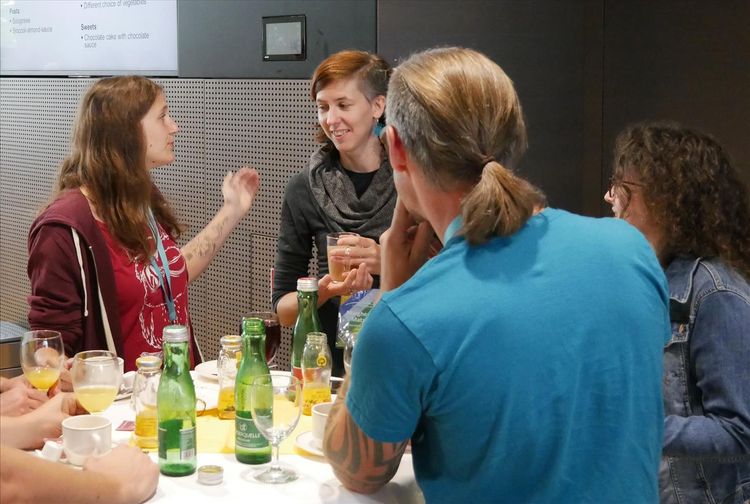It already seemed like we were slowly returning to pre-pandemic times, but travel will remain limited with the emergence of new variants of the SARS-CoV2 virus. For physicists with an academic career, this means that attending a conference will be almost impossible again this year. Instead of travelling to a nice place at home or abroad, where one can not only exchange the latest results of one's own research with colleagues, but also do networking, one will again have to sit in front of the computer for a week and watch the scientific lectures online.
A physics conference
But how can one actually imagine such a physics conference? Well, the organisers often try to reserve the most beautiful holiday resorts as venues for the big conferences, for example Jeju Island in South Korea, the Laforet Shuzenji Resort in Japan or the Marriot Casa Magna in Cancun in Mexico.
The aim of a physics conference is the scientific exchange of international working groups and to develop new contacts for future collaborations, research stages or future jobs. The format usually consists of plenary lectures, oral sessions and poster sessions. The former are addressed to the general audience, deal with current research areas and are usually held by outstanding experts in the respective field.

In addition, there are several oral sessions, in which short lectures on specific topics with a maximum duration of 10 minutes are given. A chair person is responsible for keeping the time limit and reminds the speaker when the time limit has expired. Some chairpersons are not really strict about this, which sometimes makes the session seem eternal. In addition, the audience has the opportunity to ask questions to the speaker, and the chair person leads the discussion.
Finally, there are poster sessions, in which mostly younger scientists, usually still students, present their results on a large-format poster and are also personally available for questions. The posters are displayed in a large hall, and refreshments are also provided, which creates a more relaxed atmosphere than at an oral session. Actually, the most interesting physics discussions come about after a beer or two.

Physics conference then and now
The first physics conference in history was the so-called Solvay Conference and it took place in Brussels in 1911. The conference is named after the major industrialist who sponsored it, and since then it has been held regularly at intervals of about three years. The idea of organising an international gathering of first-class physicists to discuss the fundamental problems of contemporary physics came from Walther Nernst and Max Planck . The number of participants at the Solvay Conference is limited and the topic is based on the current "hot topics" in physics. The last Solvay Conference in 2018 dealt with the physics of living matter: space, time and information in biology.
The legendary picture above shows the participants of the fifth Solvay Conference, where Madame Curie was the only female physicist. Today, fortunately, this has changed, which can be clearly seen in the colour picture below. It was taken in 2018 during the international conference PASPS (Physics and Applications of Spin Phenomena in Solids) in Linz.
Most of the physics conferences that were planned in the last two years have been either cancelled, postponed or have taken place online. The fact that the online format is highly in vogue in times like these is not only due to the pandemic, but also to sustainability. For there is often a discussion about how meaningful it is for scientists to travel around the world, sometimes to stay for only a few hours in the country where the event is taking place, to present their results, which are published in international journals anyway.

Although sustainability is of great importance, an online conference will never be able to replace the experiences and encounters during a face-to-face conference. The opportunities for networking and scientific exchange are completely lost with this format. If all goes well, the presentations are not delayed, the presenters and chair persons are well acquainted with the online tool and there are no interruptions. In the virtual format, a lecture can be broadcast from the office or from home, or recorded before the conference. However, the latter option does not allow for questions during the session.
While one could get easily distracted for various reasons during non-virtual conferences, sooner or later the real-time atmosphere forced people to pay attention. In addition, very interesting discussions took place during the coffee breaks between the different sessions. Now, you sit alone in front of your computer with a cup of coffee, often in the middle of the night, because the conference takes place on another continent or in another time zone.
Online Beamtimes
But not only conferences, also beamtimes (laboratory stays abroad) have been taking place online since the outbreak of the pandemic. We reported on a beamtime at the French synchrotron SOLEIL in April 2019. This year we would have had the opportunity to go there again, but due to travel restrictions this was not possible.
The preparation phase for the online beamtime is hardly different from travelling to the synchrotron: the samples have to be characterised, evaluated, packaged and shipped. Unfortunately, this was all the hands-on work to be done. Afterwards, it was just a matter of exchanging many emails to clarify the exact measurement process and to exchange information with the scientist responsible in France (Beamline Scientist). We were lucky that he was able to be there himself and that all measurements took place without any major problems. During the beamtime, we had to wait in front of our PC for emails with urgent requests.
However, an online beamtime can also some have advantages, as a colleague who should have gone to Switzerland told us. In addition to pre-characterising and sending the samples, there was a short zoom meeting with the beamline scientist beforehand to clarify remote access to the system and the final details. During the beamtime, the procedure was quite similar to being present on site, as she was able to remotely access and control measurements from her PC at the university instead of the one at the beamline. Meanwhile, she was in constant contact with the beamline scientist, who, for example, changed the samples on site. This made her less flexible in terms of the measurement process, but she could go to sleep at a normal time and let the measurements run overnight via a computer program. She was also able to start analysing the data immediately the day after the beamtime ended, where otherwise she would have been travelling back.
All these remote and online solutions get a bit tedious in time, so hopefully physicists will soon be able to sit down again with colleagues on a warm summer night with a glass of wine at a conference to discuss sustainability in science and interesting research results. (Anna Spindlberger, 3.8.2021)
More blogposts
What light reflection tells us about chocolate
Women in physics: Monika Ritsch-Marte, from theory to applied optics
Gallium nitride: the allrounder among semiconductors
To the german blog version